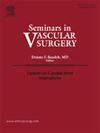Artificial intelligence for the vascular surgeon
IF 2.4
3区 医学
Q1 PERIPHERAL VASCULAR DISEASE
引用次数: 0
Abstract
In recent years, artificial intelligence (AI) has permeated different aspects of vascular surgery to solve challenges in clinical practice. Although AI in vascular surgery is still in its early stages, there have been promising developments in its applications to vascular diagnosis, risk stratification, and outcome prediction. By establishing a baseline knowledge of AI, vascular surgeons are better equipped to use and interpret the data from these types of projects. This review aims to provide an overview of the fundamentals of AI and highlight its role in helping vascular surgeons overcome the challenges of clinical practice. In addition, we discuss the limitations of AI and how they affect AI applications.
血管外科医生的人工智能
近年来,人工智能(AI)已经渗透到血管外科的各个方面,以解决临床实践中的挑战。尽管人工智能在血管外科中的应用仍处于早期阶段,但在血管诊断、风险分层和预后预测方面的应用已经有了很好的发展。通过建立人工智能的基础知识,血管外科医生可以更好地使用和解释这些类型项目的数据。本文旨在概述人工智能的基本原理,并强调其在帮助血管外科医生克服临床实践挑战方面的作用。此外,我们还讨论了人工智能的局限性以及它们如何影响人工智能应用。
本文章由计算机程序翻译,如有差异,请以英文原文为准。
求助全文
约1分钟内获得全文
求助全文
来源期刊
CiteScore
3.50
自引率
4.00%
发文量
54
审稿时长
50 days
期刊介绍:
Each issue of Seminars in Vascular Surgery examines the latest thinking on a particular clinical problem and features new diagnostic and operative techniques. The journal allows practitioners to expand their capabilities and to keep pace with the most rapidly evolving areas of surgery.

 求助内容:
求助内容: 应助结果提醒方式:
应助结果提醒方式:


